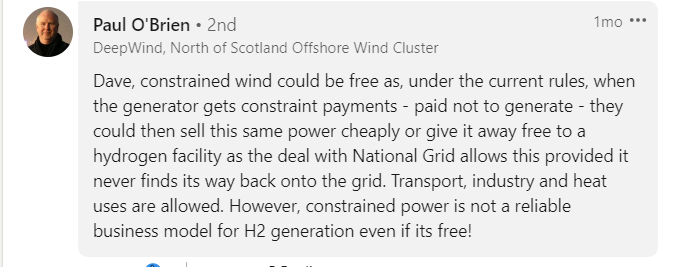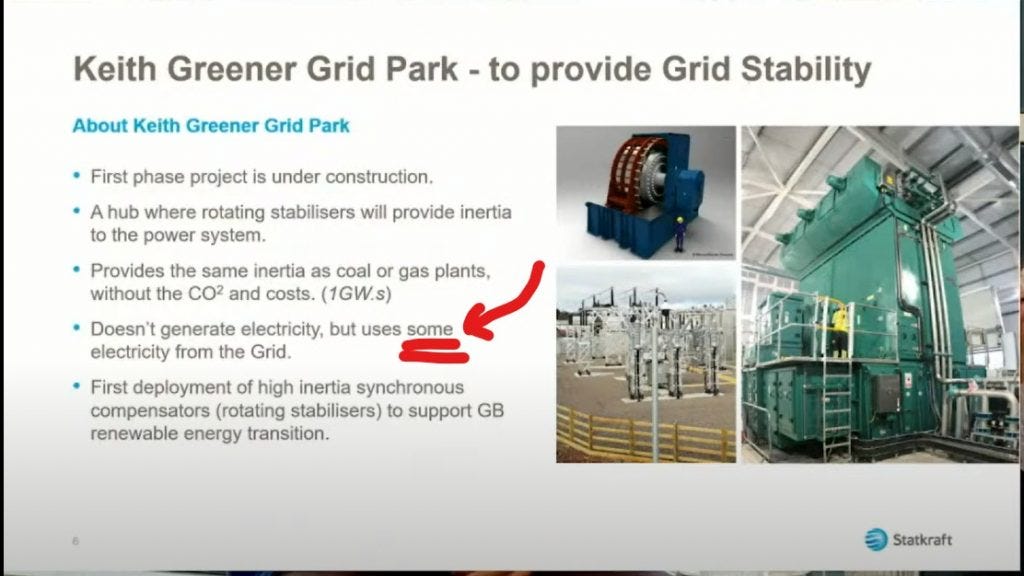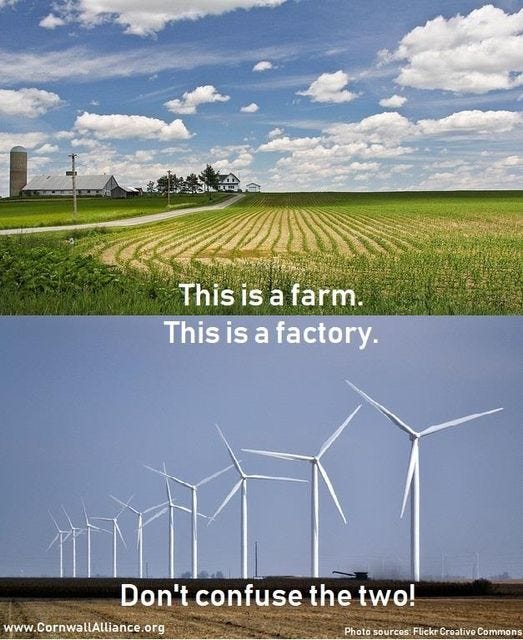How industrial wind plants charge you twice for the same electricity
Industrial wind turbine installation scam revealed
This article published this morning was certainly very welcome for those of use who have been looking into the wind scam for a number of years.
There are a few grammatical typos in the original article but I will replicate it as it is.
How windfarms charge you twice for the same electricity
Monday 10th October 2022 | Andrew Montford, GWPF
I recently noted that Moray East, a very large and very new windfarm situated off the Scottish coast, is spending a remarkable amount of time switched off – something like a quarter of the time, in fact. As is widely known, windfarms can receive so-called constraint payments when the transmission grid doesn’t have the capacity to deliver power from windfarms (typically in the north, and often far offshore) to markets (in the south), so Moray East receiving such payments was not a surprise; only the scale of the payments was.
A constraint payment is worth around £60 per megawatt hour, which is around the fixed price at which Moray East contracted to sell power to the grid. However, as noted elsewhere, Moray East has failed to take up that contract, and it is therefore able to sell its output into the open market at £200, £300 or even £400 per megawatt hour. I’ve previously estimated that its costs appear to be somewhere north of £125 per megawatt hour, so it should be extremely profitable at the moment.
But it still doesn’t resolve the mystery of why investors went ahead and built the windfarm. Their expectation of market prices would only have been something around £50 – the level it has been at for many years. So their best case scenario for their earnings would have been subsidised price they agreed with the grid – £57 at the time, although the annual uplift has now taken it up to £70-odd. Either way, still far below their costs.
How were Moray East’s developers hoping to make up the difference? The income had to come from somewhere. The revenue stream from selling power to customers appeared not to be the answer. Customers look after themselves. But the amount of time Moray East is spending switched off got me thinking. The windfarm developers must have known that they would be constrained off a lot – they exhaustively analyse wind speeds, turbine design and the capacity of the grid to take their power. They must also know that the rate of payment for being constrained off was not that high. I started to suspect that they had found a way to get game the system to their advantage.
My suspicions were soon confirmed. In a chat on LinkedIn, I was involved with a discussion about whether the power used for future factories making “green” hydrogen (from electrolysis of water, using renewable electricity) would be “free”. Someone chimed in with this:
Remarkable. And a little research confirms that this is correct. A constraint payment is triggered when the Balancing Mechanism accepts a generator’s bid to reduce their metered power export to the transmission grid. But the metered export is measured at the transmission grid boundary. In other words, when a windfarm is constrained off or constrained down, it doesn’t actually have to switch off or switch down. It is free to divert power via the distribution grid, or a private wire, to anyone who will pay for it.
But is it actually happening? Further research showed that there is a major push to get data centres installed near windfarms’ grid connections, but I could find nothing extant. Then I came across a presentationabout the Beatrice offshore windfarm, sited next door to Moray East, and operational since 2019. The 220 kV cable from the windfarm comes ashore at Portgordon, on the Moray coast, and then runs down to meet the transmission grid at SSE’s Blackhillock substation, adjacent to which the windfarm operators have built a series of transformers. Here, as well as stepping up to 400kV for grid transmission, there is also the facility to step down to the distribution grid voltage of 33kV. Intriguing!
Then I decided to search Moray Council’s planning portal for Blackhillock. There, I found the following application:
22/00067/S36 | Install a battery energy storage system (BESS) with associated infrastucture at | Blackhillock Electricity Substation Keith Moray
So someone is clearly very interested in Beatrice’s output. And Beatrice’s developers are no doubt extremely pleased about it, because if the batteries get built, they will be able to receive a constraint payment on top of whatever they sell the electricity for. You should be less happy, however, because you will be paying for same the electricity twice – once in the form of a constraint payment and again when the electricity is fed from the batteries back onto the grid.
But the Blackhillock battery facility is still at the planning stage. Is Beatrice (or anyone else) making money in this way already? Fortunately, the mapping system on Moray Council’s planning portal shows the electricity cables coming out of the substation, and it is possible to follow one of these a couple of miles north to the small town of Keith, and to the Keith Greener Grid Park. Here, just a few months ago, renewables giant Statkraft commissioned a giant flywheel. This is used for frequency stabilisation on the grid. (Previously, fossil-fuelled power stations provided this stability for free, but now you are having to pay other people to provide it as an add-on service.)
If there is any doubt about that Statkraft are taking power direct from the windfarm, a COP26 presentation by the company reveals that only “some” of its power comes from the grid.
So we know that electricity is finding its way direct from the windfarm to industrial users via the distribution grid. However, this observation comes with a caveat. We don’t know for sure that these are megawatt hours of electricity for which the windfarms have received constraint payments. But we do know that it would be completely within the rules for them to do so (there is no suggestion of lawbreaking), and that it would be highly profitable too. It therefore seems implausible that they wouldn’t be seizing the opportunity that they have been given.
Moreover, this appears to be a rational way to explain the very low prices at which windfarms are bidding to supply the grid (although perhaps only a partial explanation). A constraint payment of £60 on top of a CfD worth £70 (a figure that rises over the windfarm’s life) should take it above its levelised cost of £125, at least on 25% of the windfarm’s output.
I conclude then that the Government has handed windfarm operators a way to make you pay twice for the same electricity.
Please note that I refuse to call these bird, bat, insect killing, health and environment destroying industrial wind factories as “farms.” In my opinion the term was cooked up for marketing purposes to soften the reality of the huge damage these industrial installations cause.
Jo Nova encapsulates it well:
Why are Wind Farms called “Farms”? It’s not like anything grows there
Wind Farm, Wind Park, Wind Sheep, Wind Cows, & Wind-Flowers?
This week’s note on mangling English: Since when was an industrial plant a farm? Electricity does not grow, breathe, or look cute in photos. There is nothing biological to sell.
Some will say the term “farm” has broader definitions now. I say we might as well call a coal-fired-plant a “coal farm”, or Fukishima a “nuclear-farm” (that had a “farming accident”)?
The word “farm” has been stolen for its good PR value. Let’s take it back.
Industrial wind turbines are a massive subsidy swamp that produces almost nothing that can’t be provided in cheaper and more efficient ways elsewhere.
Can someone let Wikipedia know that Industrial Wind Turbines are not “Wind Parks” either?"
Related post:










THIS is investigative journalism. Applause.